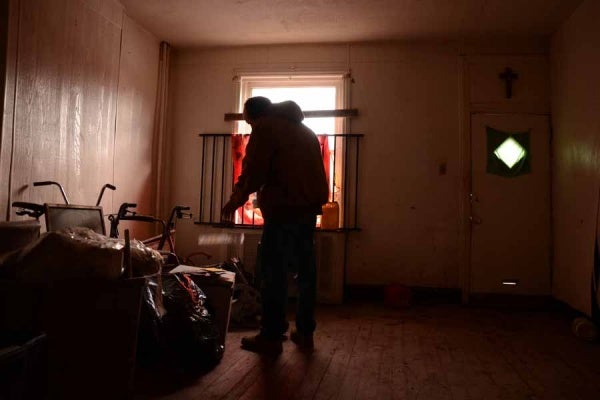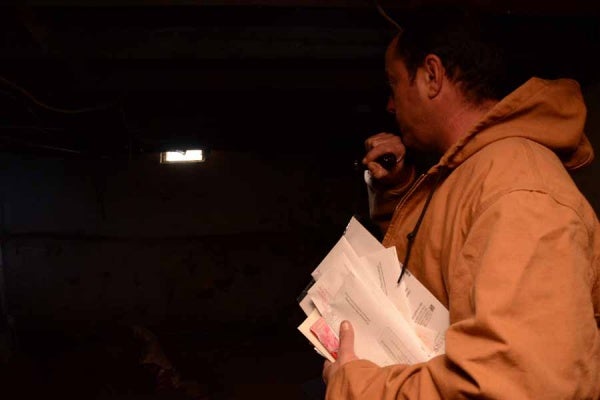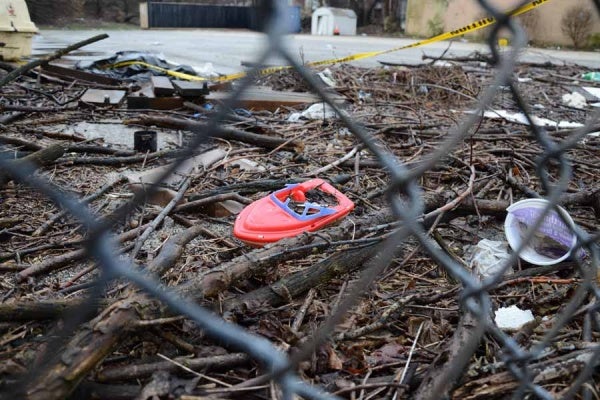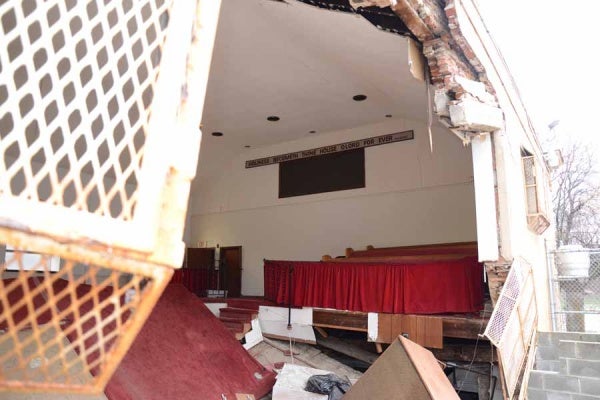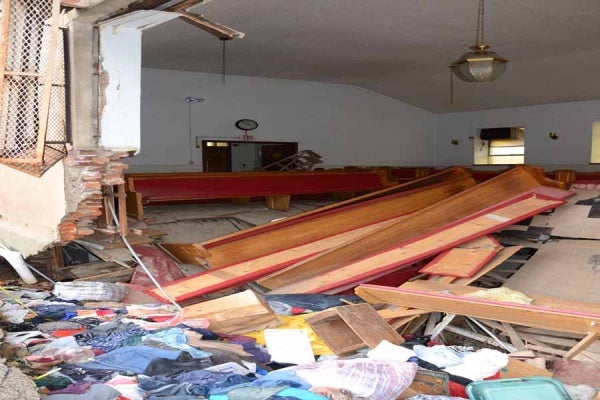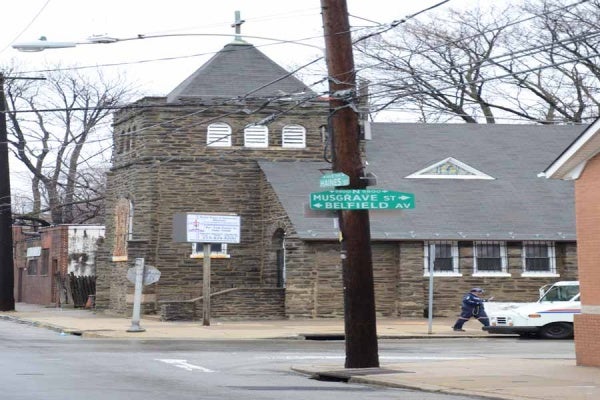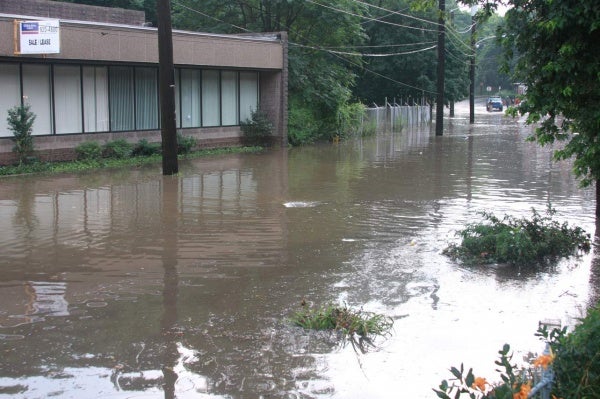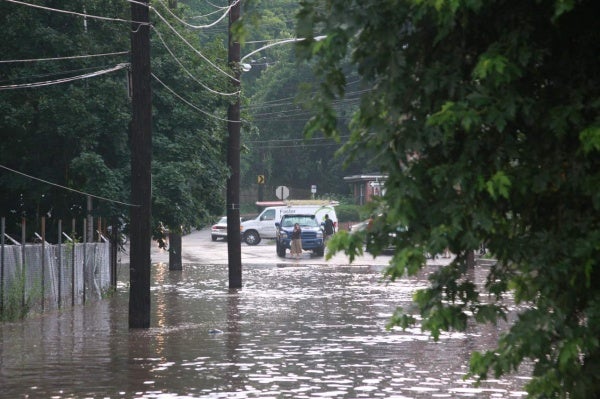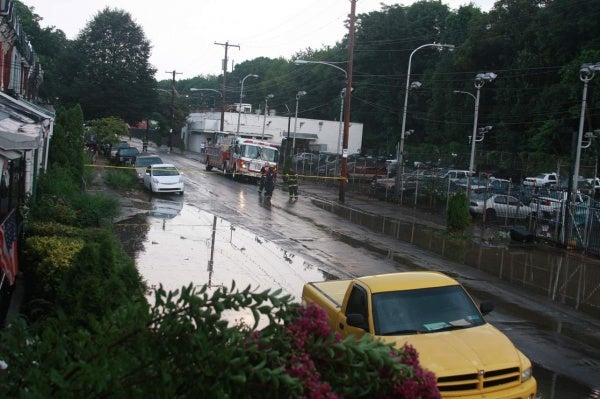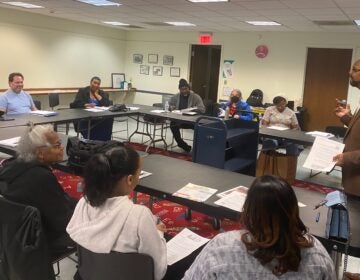East Germantown residents hope city offers flood bailout
Matthew Santillo wants the city to buy his home.
Since 2007, the Philly transplant has lived on the 5300 block of Belfield Ave. in Germantown, a stretch where heavy rainfall routinely floods the street with thigh-high water, usually in summer.
Three or four feet of a muddy brown mixture of storm and sewer water will quickly collect on the concrete, he said, and seep into his basement and backyard.
The bell-like sound of the street’s manhole covers bursting into the air is now a familiar warning sign to move your car to safety.
“It’s just become a way of life,” said Santillo of the floods.
Last summer was the worst. Hurricane Irene and Tropical Storm Lee pounded that area with the type of rainfall that hits every two centuries.
During the latter in East Germantown, one of the city’s lowest-lying areas, cars floated down the street as floodwaters from higher ground dumped downward. On East Musgrave Street, a 27-year-old woman drowned in the backseat of the car in which she was trapped.
At Santillo’s place, the rainwater reached to just two inches below his front door. It’s gotten to the point where the sound of rain sometimes keeps Santillo awake at night.
“If it’s raining all night, it’s hard to sleep wondering if the water level is going to rise up to four feet and trap us here,” he said.
And so, as unfortunate as it is, Santillo said he and his family need to leave their home for another. He’s not sure where they’d go.
Is rescue imminent?
Santillo and other residents interested in a city buyout could get their wish.
Officials with the Philadelphia Water Department, in conjunction with the U.S. Army Corps of Engineers, are in the midst of completing a computer model of a 12-mile stretch of sewer line that runs roughly from Mt. Airy to East Germantown and down to Logan.
“The model will tell us where we need to provide additional capacity in this sewer system. Where do we need to make the sewer bigger, where we may need parallel sewers or maybe where we might want to put underground storage tanks,” spokesperson Joanne Dahme says.
The problem is that the digital study is not scheduled to be completed until spring. Any underground renovations wouldn’t start for at least another five years and could last for another five beyond that.
For some, that timeline leaves too much opportunity for more disaster and devastation to strike.
The Water Department is working to provide residents with intermediate solutions which are mostly aimed at keeping floodwater from entering homes through plumbing fixtures – sinks and toilets, for example.
But eight blocks currently part of the department’s study would still be vulnerable, said Dahme. On those blocks, flood water also flows into homes from the street.
Santillo’s block is on that list. So are the 5900 block of Belfield, the 5800 block of Crittenden St., the 2100 block of West Godfrey St., the 300 block of East Church Lane, the 6200 block of Chew Ave. and the 500 and 600 blocks of East Haines St.
During a recent community meeting, Jasmine Rivera, a community organizer with ACTION United, counted 15 attendees on a petition that essentially says residents are interested in talking to the city about a buyout.
“We’re in the reconnaissance stage,” says Dahme.
Stick around or swim away
Kimberly Adams, who lives on the 500 block of East Haines St., said she’s not going anywhere. It’s the only place she’s ever called home.
Adams’ house was severely flooded last summer as water poured in from the street, but thanks to assistance through the Federal Emergency Management Agency, she was able to pay for a number of renovations.
A new front façade and front door are the most visible changes. There’s also a new roof, kitchen, living room and dining room. Adams said she’s not worried about the work being washed away in another flood.
“We’ve had floods, but never that came into the house,” said the 30-year-old mother whose home sits across the street from a church with a gaping hole in an exterior wall, courtesy of Tropical Storm Lee.
The bottom line is that East Germantown is a neighborhood she couldn’t imagine leaving. She doesn’t think her neighbors or other residents will see a buyout – an idea she says has been raised before to no avail.
“That stuff ain’t happening,” said Adams.
The city has not yet made any agreement to purchase any properties. It’s not clear if the cash-strapped city even has the funds.
Brian Abernathy with the city’s Managing Director’s Office said his department is aware of the flooding issues at this point, but that no formal discussions around a potential buyout have taken place.
City Councilwoman Cindy Bass, whose Eighth District includes most of Northwest Philadelphia, has been aware of the severe flooding in her district since before she was sworn into her first term in office this January. As a staffer with U.S. Rep. Chaka Fattah (D-Phila.), she met with neighbors who live on flood-prone blocks of the city.
Bass spokesperson Joe Corrigan said representatives from the office plan to meet with the Water Department to see what can be done on the city level to aid affected residents.
“These people need our help,” says Corrigan, “and we’re going to help them every way we can.”
Seeking a way out
Back on Belfield Avenue, Santillo says he still hasn’t finished repairing his basement, which has been battered by floodwaters. He hasn’t seen much of a point considering how often he suffers through rainstorms.
It’s an attitude that has him looking for a way to leave his block.
“Who in their right mind would want to live in a situation like that where your foundation is being weakened, your house might fall down, and you have sewage water pouring in,” Santillo said. “It’s a horrible way to live.”
WHYY is your source for fact-based, in-depth journalism and information. As a nonprofit organization, we rely on financial support from readers like you. Please give today.



